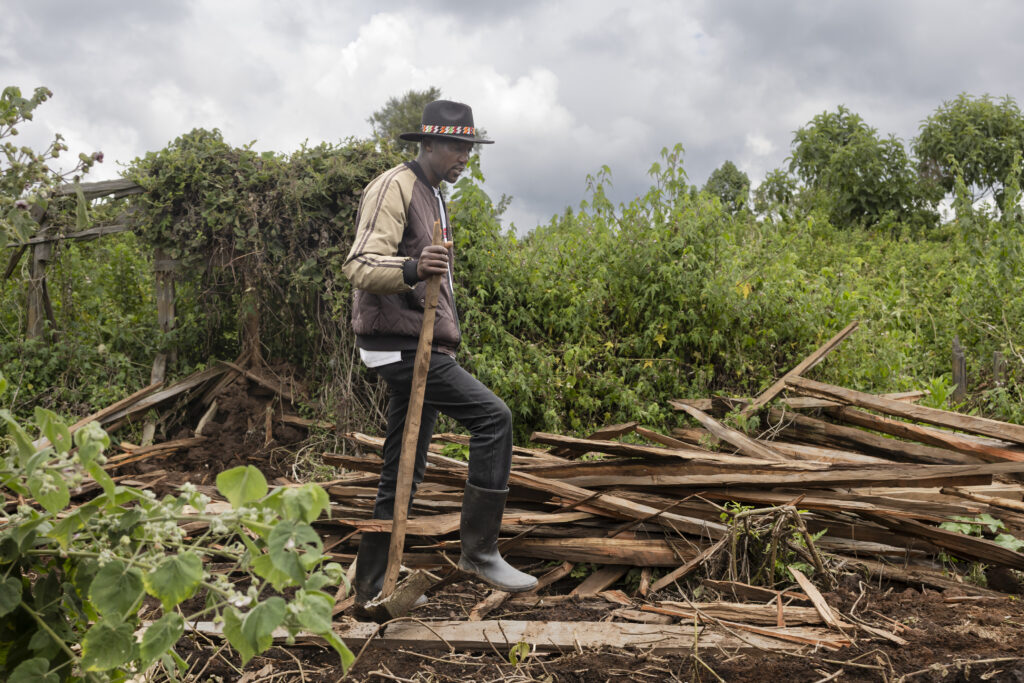Ligue 1: Chevalier doit encore convaincre au PSG, sous les yeux de Donnarumma
Le nouveau gardien du Paris SG Lucas Chevalier a l’occasion, vendredi contre Angers (20h45), de commencer à convaincre le Parc des Princes, alors que le taulier de la saison dernière, Gianluigi Donnarumma, est toujours au club.L’Italien, qui n’était pas dans le groupe des deux premières rencontres de la saison, est d’ailleurs réapparu à l’entraînement jeudi au Campus PSG de Poissy, participant sous les yeux de la presse au premier exercice de passes dans le rond central – et non à l’échauffement des gardiens.Donnarumma, l’un des héros de la campagne victorieuse de Ligue des champions, n’a toujours pas retrouvé de club après l’échec cet été de sa prolongation, à un an de la fin de son contrat dans la capitale.C’est devant sa télévision que le grand échalas a observé ses coéquipiers remporter la Supercoupe d’Europe contre Tottenham aux tirs aux buts, le 13 août, puis gagner sans éclat à Nantes dimanche dernier (1-0) pour la reprise de la Ligue 1.Il a sans doute scruté son successeur Lucas Chevalier, transféré depuis Lille. Chevalier était couvé du regard depuis plusieurs mois par la direction sportive parisienne, qui avait parallèlement lancé des négociations de prolongation avec Donnarumma.- Une erreur et un arrêt décisif -Mais le club “cherchait un profil différent” et n’a pas cherché à tout prix à répondre aux exigences du portier de la sélection italienne, a assuré Luis Enrique le 12 août. Avant de compléter jeudi en conférence de presse: “Ce sont des décisions toujours difficiles à prendre, je n’ai pas eu de problème à la prendre. (…) Je peux comprendre les critiques, mais je dois dire qu’on est calmes, tranquilles, on sait où on veut aller, c’est la chose la plus importante”.Peut-on en dire autant de Lucas Chevalier lui-même? Pour un joueur de 23 ans qui jouait le podium de Ligue 1 il y a encore quelques mois, la pression est grande chez les champions d’Europe, et il faudra du caractère pour briller devant ses nouveaux fans vendredi.Ses performances contre Tottenham et Nantes étaient solides mais appellent confirmation. Un arrêt manqué lors du deuxième but des Anglais a fait planer des doutes, mais Chevalier s’est bien rattrapé en séance de tirs aux buts avec un arrêt au meilleur des moments pour offrir la Supercoupe au club.- “Leadership” -Son capitaine Marquinhos observe: “Il vient d’arriver et c’était le moment pour lui de s’affirmer. C’est le PSG, c’est comme ça. Mais il a aussi connu (la pression) dans une moindre mesure à Lille, et le même genre de pression avec la sélection. On est contents de l’avoir avec nous”.Son jeu au pied a été ostensiblement salué par Luis Enrique à l’occasion d’une relance aérienne précise vers les ailes, contre Nantes. L’entraîneur a détaillé ce qu’il attendait de Lucas Chevalier: “Nous voulons un joueur qui a de la continuité, qui peut générer une supériorité, qui peut prendre les bonnes décisions en fonction de la façon de presser des adversaires, et d’où se trouvent les solutions avec le ballon”.Le coach souhaite aussi “sans le ballon une couverture de la ligne défensive, évidemment du jeu aérien et toutes les situations habituelles pour un gardien de but”. Mais, et Donnarumma appréciera, c’est au niveau mental que Luis Enrique voit aussi une potentielle plus-value: “Nous demandons à nos joueurs de faire preuve de leadership sur le plan mental, bien sûr. Un gardien de but est un joueur qui voit l’ensemble du terrain, qui voit tous les joueurs, donc en général, il voit ce qui se passe sur le terrain.”Vendredi soir, Lucas Chevalier devrait donc contribuer à lancer ses coéquipiers à l’assaut du but angevin, mais il faudra être vigilant et bondissant sur les contre-attaques qui ne devraient pas manquer de survenir.
Ligue 1: Chevalier doit encore convaincre au PSG, sous les yeux de Donnarumma
Le nouveau gardien du Paris SG Lucas Chevalier a l’occasion, vendredi contre Angers (20h45), de commencer à convaincre le Parc des Princes, alors que le taulier de la saison dernière, Gianluigi Donnarumma, est toujours au club.L’Italien, qui n’était pas dans le groupe des deux premières rencontres de la saison, est d’ailleurs réapparu à l’entraînement jeudi au Campus PSG de Poissy, participant sous les yeux de la presse au premier exercice de passes dans le rond central – et non à l’échauffement des gardiens.Donnarumma, l’un des héros de la campagne victorieuse de Ligue des champions, n’a toujours pas retrouvé de club après l’échec cet été de sa prolongation, à un an de la fin de son contrat dans la capitale.C’est devant sa télévision que le grand échalas a observé ses coéquipiers remporter la Supercoupe d’Europe contre Tottenham aux tirs aux buts, le 13 août, puis gagner sans éclat à Nantes dimanche dernier (1-0) pour la reprise de la Ligue 1.Il a sans doute scruté son successeur Lucas Chevalier, transféré depuis Lille. Chevalier était couvé du regard depuis plusieurs mois par la direction sportive parisienne, qui avait parallèlement lancé des négociations de prolongation avec Donnarumma.- Une erreur et un arrêt décisif -Mais le club “cherchait un profil différent” et n’a pas cherché à tout prix à répondre aux exigences du portier de la sélection italienne, a assuré Luis Enrique le 12 août. Avant de compléter jeudi en conférence de presse: “Ce sont des décisions toujours difficiles à prendre, je n’ai pas eu de problème à la prendre. (…) Je peux comprendre les critiques, mais je dois dire qu’on est calmes, tranquilles, on sait où on veut aller, c’est la chose la plus importante”.Peut-on en dire autant de Lucas Chevalier lui-même? Pour un joueur de 23 ans qui jouait le podium de Ligue 1 il y a encore quelques mois, la pression est grande chez les champions d’Europe, et il faudra du caractère pour briller devant ses nouveaux fans vendredi.Ses performances contre Tottenham et Nantes étaient solides mais appellent confirmation. Un arrêt manqué lors du deuxième but des Anglais a fait planer des doutes, mais Chevalier s’est bien rattrapé en séance de tirs aux buts avec un arrêt au meilleur des moments pour offrir la Supercoupe au club.- “Leadership” -Son capitaine Marquinhos observe: “Il vient d’arriver et c’était le moment pour lui de s’affirmer. C’est le PSG, c’est comme ça. Mais il a aussi connu (la pression) dans une moindre mesure à Lille, et le même genre de pression avec la sélection. On est contents de l’avoir avec nous”.Son jeu au pied a été ostensiblement salué par Luis Enrique à l’occasion d’une relance aérienne précise vers les ailes, contre Nantes. L’entraîneur a détaillé ce qu’il attendait de Lucas Chevalier: “Nous voulons un joueur qui a de la continuité, qui peut générer une supériorité, qui peut prendre les bonnes décisions en fonction de la façon de presser des adversaires, et d’où se trouvent les solutions avec le ballon”.Le coach souhaite aussi “sans le ballon une couverture de la ligne défensive, évidemment du jeu aérien et toutes les situations habituelles pour un gardien de but”. Mais, et Donnarumma appréciera, c’est au niveau mental que Luis Enrique voit aussi une potentielle plus-value: “Nous demandons à nos joueurs de faire preuve de leadership sur le plan mental, bien sûr. Un gardien de but est un joueur qui voit l’ensemble du terrain, qui voit tous les joueurs, donc en général, il voit ce qui se passe sur le terrain.”Vendredi soir, Lucas Chevalier devrait donc contribuer à lancer ses coéquipiers à l’assaut du but angevin, mais il faudra être vigilant et bondissant sur les contre-attaques qui ne devraient pas manquer de survenir.
Evicted from their forests, Kenyan hunter-gatherers fight for their rightsFri, 22 Aug 2025 05:15:12 GMT
Fred Ngusilo stoops to pick up a leather pouch, once used to collect honey, and a discarded shoe from the Mau forest floor, painful reminders that his Ogiek hunter-gatherer community once quietly flourished in southern Kenya, before they were evicted and their homes destroyed.Ngusilo belongs to the Ogiek group, which is among the last hunter-gatherer …
Erik Menendez denied parole, decades after parents’ murders
Erik Menendez was denied parole Thursday more than three decades after he and his brother Lyle slaughtered their parents in the family’s luxury Beverly Hills home.A California panel ordered the 54-year-old to stay in prison, defying a lengthy campaign waged by family, friends and celebrities like Kim Kardashian.”Erik Menendez was denied parole for three years at his initial suitability hearing today,” said a brief statement from the California Department of Corrections and Rehabilitation (CDCR).The result will be a huge blow to a movement that has swelled in recent years, nourished by documentaries and TV dramas, including the smash Netflix hit “Monsters: The Lyle and Erik Menendez Story.”The show and other productions have fixated on the grisly details of the 1989 shotgun murders and the televised jury trial that captivated audiences with accounts of their abusive upbringings and posh lifestyles.Thursday’s hearing came 36 years and a day after his family learned of his parents’ deaths, Erik Menendez told the parole board.”Today is the day all my victims learned my parents were dead,” he said during the 10-hour hearing. “So today is the anniversary of their trauma journey.”The parole denial comes the day before Lyle Menendez, 57, will appear before a panel to ask them to release him from prison.”This is a tragic case,” parole commissioner Robert Barton said after the decision was issued. “I agree that not only two, but four people, were lost in this family.”More than a dozen relatives testified to say they’ve forgiven the Menendez brothers, as they came to be known, and to call for their release.”Two things can be true,” Barton said. “They can love and forgive you and you can still be found unsuitable for parole.”- ‘Mafia hit’ -The men are among America’s most celebrated prisoners, and the stars of one of the first-ever televised murder trials.Jurors in the 1990s were told how the men killed Jose and Kitty Menendez in what prosecutors said was a cynical attempt to get their hands on a large family fortune.After setting up alibis and trying to cover their tracks, Erik and Lyle shot Jose Menendez five times with shotguns, including in the kneecaps.Kitty Menendez died from a shotgun blast as she tried desperately to crawl away from her killers.The brothers initially blamed the deaths on a mafia hit, but changed their story several times in the ensuing months.Erik, then 18, confessed to the murders in a session with his therapist.The pair ultimately claimed they had acted in self-defense after years of emotional and sexual abuse at the hands of a tyrannical father.During their decades in prison, changing social mores and greater awareness of sexual abuse helped elevate the men to something approaching cultural icons.- ‘Horrific’ -Thursday’s hearing, which was closed to the public, was expected to last just two to three hours.Instead, it went on all day.Erik Menendez appeared by video link from the San Diego prison where he and his brother are being held.Two or three panel members, whose identity was not released by CDCR, quizzed him on his behavior and attitude towards the murders.The parole hearing became possible when a judge earlier this year resentenced the men, reducing their original full-life tariff to one of 50 years with the possibility of release.Los Angeles District Attorney Nathan Hochman, who opposed the resentencing, applauded Thursday’s decision.”Importantly, the (parole) Board did not bow to public spectacle or pressure, a restraint that upholds the dignity and integrity of the justice system.”Lyle’s hearing on Friday is independent of his brother’s.




